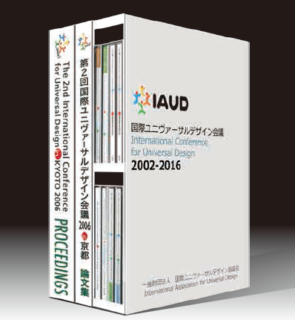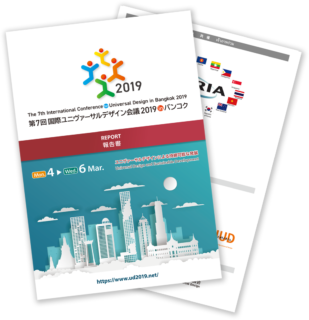2023.04.25
towards2010: Reflections in a Time of Crisis and Opportunity 2/2
2010.05.24 Updated
3. Universal Design Integrated into Sustainable Design
Over the last fifteen years, universal design has achieved a slow but steady increase in awareness though, outside of Japan, it remains largely a niche concept associated with accessible design. Over a little longer period and most especially in the last five years, we have witnessed an extraordinary embrace of environmental sustainability as central to good design. In much of the world, sustainability is understood to be the triple bottom line of environmental, social and economical sustainability. To quote from the American Institute of Architects’ Committee on the Environment: Sustainability envisions the enduring prosperity of all living things. Sustainable design seeks to create communities, buildings, and products that contribute to this vision.
It is time to consider the strategic value and practical opportunity of bringing universal design under the tent of sustainability. Socially sustainable design tends to be the vaguest element of the sustainability tripod – full of general good feeling but lacking substance. Universal design is real and substantive and responsive to the truth that no design in the 21st century can be sustainable without attention to the facts of human diversity in age and ability.
4. Next Steps
I would suggest that the way forward is clear but requires that we think globally and frame the issues a little differently. One of IHCD’s most important current projects is to create a Global Collection of Case Studies of Universal Design in the Built Environment that will result in a website open to anyone. Design practitioners in the built environment have not, in general, undertaken the same progress toward user-centered and universal design that we have witnessed in product design and technology. Their focus remains most often on barrier-free/accessible requirements.
Sharing precedents of good design of many different types in many different places is a good way to demonstrate that universal design is good design. We find that the best examples among the case studies seamlessly combine a commitment to environmental sustainability and to universal design. We intend and expect that the inspiration of those good stories will drive fresh thinking about the complementary nature of environmental sustainability and universal design. I’ve attached a few images from the case study collection.
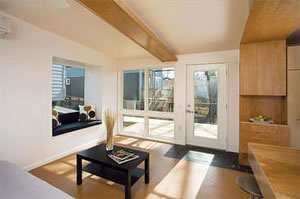 |
Eco-Mod House, a Design-Build Project of the School of Architecture at the University of Virginia, USA. ALT_TAG- A bright white and pale wood living room and edge of the kitchen show a view to the door with a large glass window in the door and a large operable window from ceiling to the floor. |
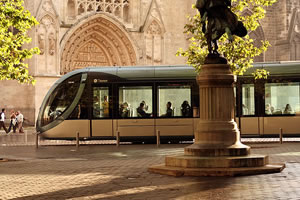 |
Bordeaux, France’s Light Rail system with underground catenary. Alt Tag: Light rail vehicle with sloped front and oversize windows and doors looks like it’s gliding without power. On one side of the train is an historic sculpture and a large gothic church building. |
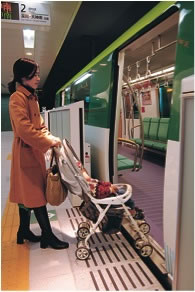 |
Nanekuma Line in Fukuoka, Japan. ALT TAG: Woman with a baby in a stroller crossing from the platform into the rail car. The path is marked by changes in texture and color but the transition is completely level and the gap small. |
These are very difficult and worrisome times and it is not likely to change as quickly as we would all like. But it is human nature to resist change until it is clear that the old way is no longer possible. I believe that universal design can become more robust and important now. But we will need to make a very strong case to justify the investment in research and production. Universal design has always been about the potential of design as a cost-effective means to support independence and community participation in every facet of society. Japan today has done more to implement that than any other nation on earth.
I would suggest that we make several priorities as we move forward from this crisis and consider how to protect and grow the universal design movement. IAUD’s leadership and capacity are unique in the world. It can be a significant driver in reinvigorating the agenda.
_ Learn the multiple ways to market and promote universal design globally that respects the social and cultural differences. Find new ways to talk to new markets. Japan has created a successful but unique society-wide market for universal design.
We need to find ways to bring great universally designed products of all kinds to societies unable to hear or appreciate the language of universal design. Evaluating options for pairing of environmental sustainability and universal design as social sustainability is one of those strategies.
_Share stories of success globally but generate excitement about the next chapter. Conferences are wonderful opportunities to learn the state-of-the-art but they should also be catalysts for the next generation of ideas and for the literal next generation of young people who will carry on this mission. Engage them through competitions and other opportunities to get involved. In times when travel may prove impossible for many, sharing the experience through digital technology is likely to be more important than ever.
_ In most of the world there is still an unmet need for robust economic models that make the case for universal design in a similar way to the powerful economic models that have been so instrumental in moving environmental sustainability forward. How do measure the benefits of doing it and the costs of avoiding it?





